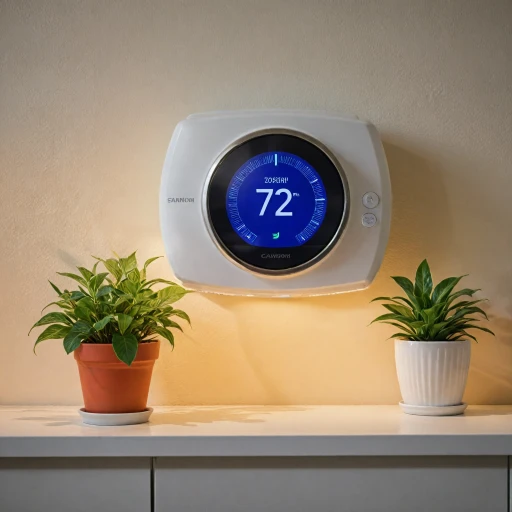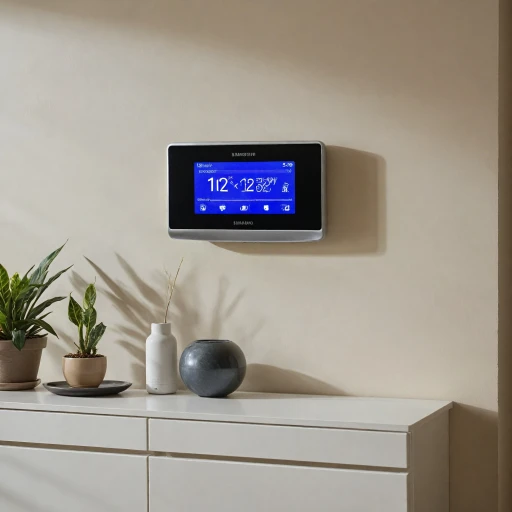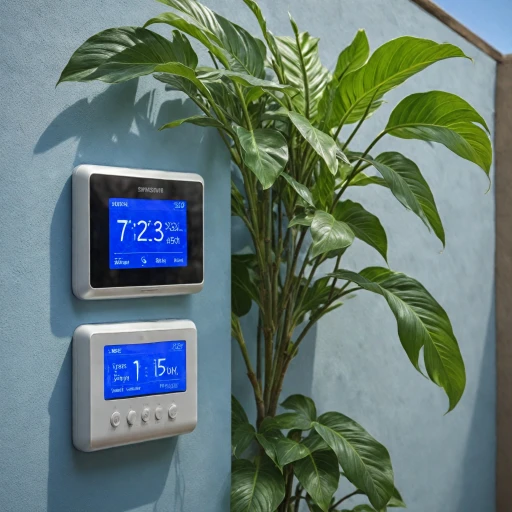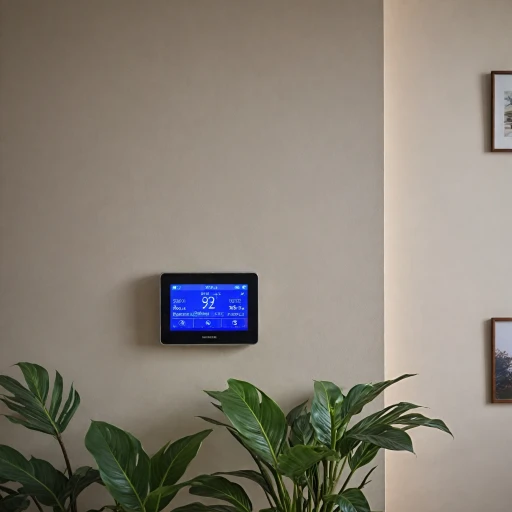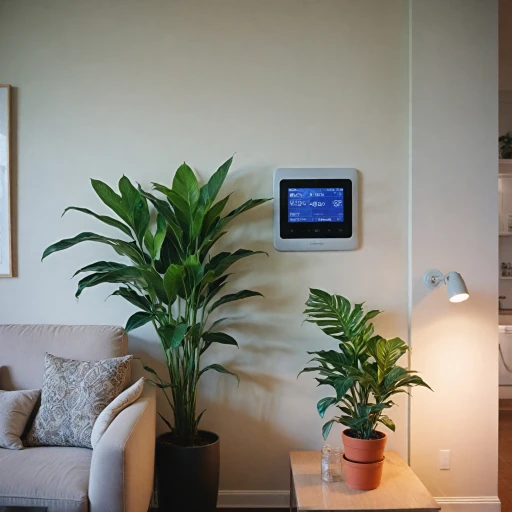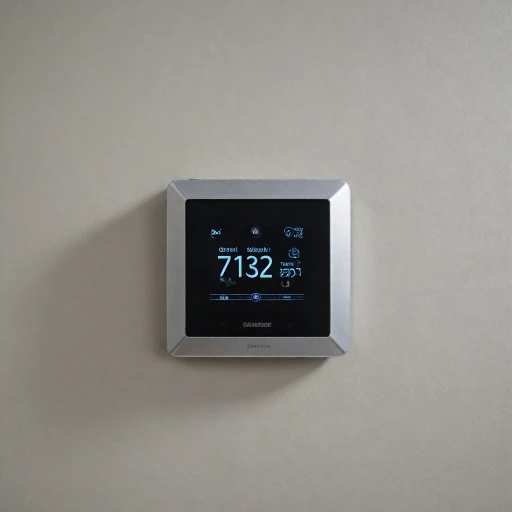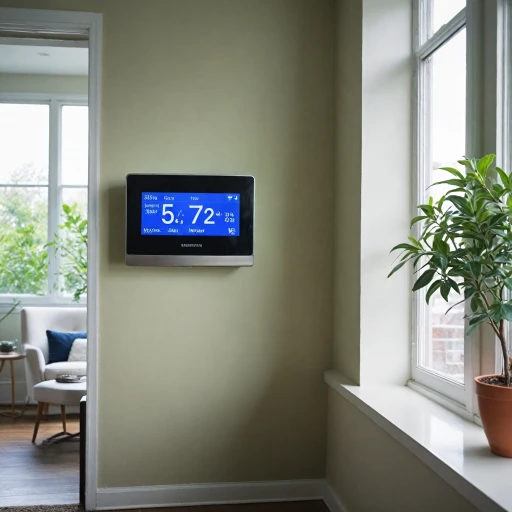The Role of Batteries in Smart Thermostats
Understanding the Importance of Batteries
Smart thermostats have revolutionized how we control indoor climate, offering unprecedented convenience and energy efficiency. A key component that ensures these digital marvels operate seamlessly is the battery. While some models rely on hardwired power sources, many smart thermostats utilize batteries to maintain their settings and user preferences without interruption during power outages or during specific off-grid setups. The digital thermometer within the thermostat uses this power to deliver precise readings and adjustments, highlighting the significance of reliable battery performance. High-quality lithium coin and lithium ion batteries are commonly chosen due to their efficient longevity and performance. Brands and manufacturers take great care in recommending appropriate battery types for their products, ensuring that the original equipment runs smoothly and accurately. Battery longevity and ensuring compatibility is paramount. Avoid the temptation to opt for cheaper options that may not meet the high standards of performance needed by smart thermostats. Often, products will specify recommended or compatible battery options, along with the MSRPs for replacements; these can be found in the user manual or on the accessories section of the manufacturer’s website. Understanding the pivotal role batteries play will undoubtedly aid in ensuring your smart thermostat maintains its peak performance and longevity. Be mindful of signs that indicate replacement is necessary and choose replacement batteries wisely, ensuring both reliability and efficiency are upheld within your home systems.Signs Your Thermostat Battery Needs Attention
Recognizing When It's Time for a Thermostat Battery Swap
In your quest for a perfect indoor climate, understanding the subtle signals that your smart thermostat's battery presents is crucial. Recognizing these signs can help ensure that you’re not caught off guard by an untimely power failure in your digital thermometer. Let's delve into some telltale signs suggesting a battery replacement may be necessary.
- Display Issues: A primary indicator that your thermostat battery needs attention is an unresponsive or fading display. This symptom suggests the battery is draining and the digital screen can’t maintain its brightness or contrast.
- Intermittent Connectivity: Smart thermostats rely on a consistent power source for constant communication with other devices. If your thermostat regularly loses connection to your Wi-Fi network or smartphone, batteries could be to blame.
- Inconsistent Temperature Readings: A sluggish battery might result in fluctuating temperature readings from your digital thermometer, leading to discrepancies between the thermostat's setting and the actual room temperature.
- Warning Notifications: Some products offer low battery alerts either on the device itself or through your smart device. Heed these warnings to avoid last-minute inconveniences.
Addressing these concerns promptly saves time and potential discomfort. For those interested, check out our other segments which further explain how to Choose the Right Battery and provide guidance on Replacing Your Thermostat Battery, helping you manage not only the signs but also the subsequent action steps effectively.
Choosing the Right Battery for Your Thermostat
Selecting the Ideal Power Source for Your Device
Choosing the right battery for your smart thermostat is crucial for optimal performance and longevity. With a variety of battery types available, it can be overwhelming to decide on the best option. However, understanding the different attributes of each type will simplify the choice and ensure your thermostat operates smoothly.
- Battery Types: The majority of smart thermostats are compatible with lithium batteries, offering a longer lifespan compared to alkaline variants. Lithium ion types are known for their high output, while lithium coin batteries are often used for their compact size.
- Manufacturer Recommendations: It's advisable to consult the user manual or the manufacturer's guidelines. Using recommended battery brands or models ensures compatibility and functionality, minimizing potential issues.
- Replacement Accessories: Consider purchasing replacement batteries in bulk, such as a pack, to ensure you always have a ready supply.
- Price Considerations: While lithium options may carry a higher price, their lifespan and reliability often justify the investment. Keep an eye on the msrp to ensure fair pricing.
When replacing your thermometer battery, ensure the positive negative orientation is correct within the battery compartment. Errors in installation can lead to improper functionality or damage. For detailed steps on battery replacement, reference your user manual or consult detailed resources that offer guidance tailored to digital thermometer management.
Understanding these nuances not only aids in selection but also aids in troubleshooting when facing common battery issues, ensuring smoother sailing in managing your smart thermostat effectively.
Steps to Replace Your Smart Thermostat Battery
Simple Steps for Replacing Your Smart Thermostat Battery
Replacing the battery in your smart thermostat ensures continued optimal performance. Adhering to the manufacturer's instructions is crucial, utilizing the following general guidelines to make the replacement process smooth and efficient.- Consult the User Manual: Begin with understanding your thermostat model's specific requirements. User manuals typically provide a step-by-step procedure and inform you about the compatible battery types and battery compartment location.
- Gather Necessary Tools: Ensure you have all appropriate accessories ready. Depending on your thermometer model, you might require a small screwdriver to access the battery compartment.
- Turn Off the Thermostat: For safety, ensure your digital thermometer or thermostat is switched off before starting the replacement process. This prevents any short circuits or damage to internal components.
- Access the Battery Compartment: Locate and open the battery compartment carefully. Whether your model uses a sliding cover or screws, access must be gained without applying excessive force to avoid damage.
- Remove the Old Batteries: Carefully take out the old batteries, noting their alignment. Pay attention to the positive negative orientation, as correct placement is crucial for the functioning of the thermometer.
- Insert Replacement Batteries: Choose options such as lithium coin or heavy-duty lithium batteries, known for longevity and performance. Insert the replacement batteries, ensuring the correct orientation as previously noted.
- Secure the Battery Compartment: Ensure the compartment is closed securely. This prevents the batteries from dislodging and protects them from external elements, which could impair battery life.
- Power the Thermostat Back On: Turn on your thermostat to verify it is working correctly. If it does not power on, recheck the placement and type of the batteries to troubleshoot any issues.
Maximizing Battery Life in Smart Thermostats
Enhancing the Longevity of Your Battery
Ensuring the longevity of your smart thermostat's battery involves a few strategic practices that can make a significant difference. These steps help in making the most out of the battery life, saving you both headache and replacement battery costs.
- Optimal Temperature Settings: Maintaining an optimal range for your thermostat settings can prevent unnecessary high power consumption. Extreme settings might drain your digital thermometer battery faster than usual.
- Regular Maintenance: Checking battery compartments regularly for any signs of corrosion or misalignment in the positive negative terminals ensures continuous performance. Brands often provide a user manual, which is a good resource for understanding proper maintenance.
- Choosing Quality Products: When selecting batteries, consider purchasing from reputable manufacturers. Opt for lithium batteries or lithium coin cells, as they are known for their longer lifespan and robust performance in digital thermometers.
- Firmware Updates: Occasionally, using the original equipment's software updates can optimize battery usage by keeping the system running efficiently. Verify updates through the manufacturer's main support channels.
- Mindful of Accessories: Regularly check any connected accessories or additional package features, as these might affect battery consumption. Reduce unnecessary settings to extend the battery's life.
- Reduced Display Use: On many smart thermostats, the display is a significant battery drain. Adjust settings to lower brightness or use sleep modes to save on power.
By staying attuned to these considerations, you can ensure that your smart thermostat remains a reliable component of your home. Keep the battery digital alive with routine checks and mindful usage.
Troubleshooting Common Battery Issues
Resolving Frequent Battery Concerns in Your Smart Thermostat
When dealing with battery issues in smart thermostats, understanding the root cause is essential to maintain efficient operation. Here are common concerns to keep in mind and how to address them:- Thermostat Not Powering On: First, inspect the battery compartment for proper placement of positive and negative terminals. Ensure the lithium coin or other battery types you are using are seated correctly and not corroded. Sometimes, it's simply a matter of adjusting or cleaning the connections.
- Frequent Low Battery Warnings: If replacement batteries don’t seem to last, the issue might be with the brand or type. Consider using high-quality lithium batteries, as they often offer superior longevity. Lithium ion alternatives can also be beneficial. Always refer back to the user manual for battery recommendations specific to your digital thermometer model. Make sure you're not mistakenly using heavy-duty batteries instead of the recommended ones.
- Thermostat Display Issues: If your thermostat's digital display is flickering or dim, this could be linked to a weak battery digital connection. This might be a sign that the battery compartment needs attention. Ensure the compartment is closed securely and that the batteries are not loose.
- Shipping Concerns After Purchase: Upon receiving your thermostat, compare the product and battery pack with the images gallery provided by the manufacturer. Ensure everything looks as it should based on the description and visuals to avoid initial usage issues.
- Ensuring Correct Usage Post-Replacement: After installing replacement batteries, review the digital thermometer settings. Many products reset settings once batteries are removed; checking the initial configuration can prevent future inaccuracies in temperature readings.


